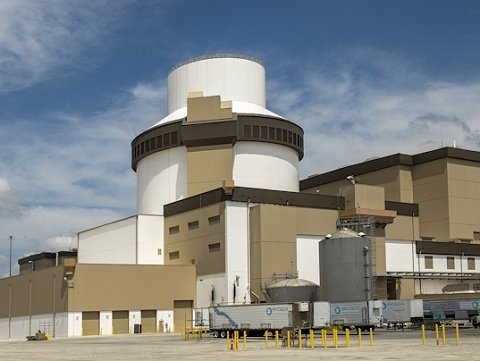A new nuclear reactor is now in commercial operation. The Vogtle 3 is the USA's first newly constructed nuclear power plant in more than 30 years and is now serving customers with clean electrical power and expects to continue to do so for the next 60 to 80 years. The unit is a Westinghouse AP1000 pressurized water reactor (PWR) rated at 1117 Megawatts net electrical power (MWe). Reactor pressure vessels and steam generators are from Doosan in South Korea.
Vogtle is already home to two operating PWRs, co-owned by Georgia Power, Oglethorpe Power, MEAG Power and Dalton Utilities, and will be operated by Southern Nuclear. . Once Vogtle 4 becomes operational in the first quarter of 2024 , the site will become the largest generator of clean energy in the USA, Georgia Power has said. See link below.
These reactors in a way represent the last few units built using older (3rd generation) technology and suffering under inefficient bureaucratic management and governmental policies. It took more than 10 years and over 30 Billion dollars to build them, with Westinghouse filing for bankruptcy because of other involvements with nuclear technology. These problems have pretty much been resolved, and the AP1000 units represent more modular construction design that can be replicated, reducing costs in the future. For example, China and Poland are building reactors based on the AP1000 model. The DOE and other nuclear groups are now promoting what is termed 4th and 5th generation Advanced nuclear technology models aimed at improving safety and reducing costs.

